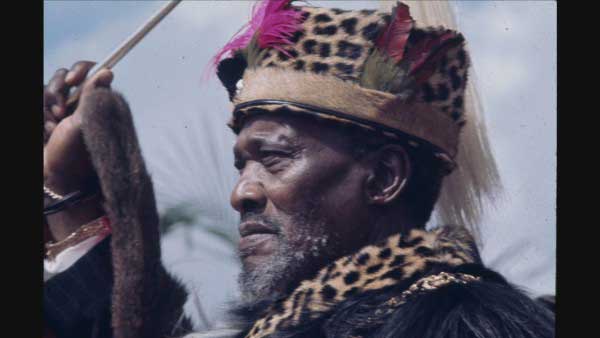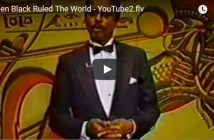Source: AtlantaBlackStar.com
Zimbabwe
Zimbabwe, formerly known as Rhodesia, is one of the greatest examples of a country being impacted by Garveyism. According to an article titled “The Seeds are Sown: The Impact of Garveyism in Zimbabwe in the Interwar Years,” Marcus Garvey’s teachings had an “electrifying effect on colonial Zimbabwean migrant workers in South Africa, inspiring them to form various associations.” Garvey’s emphasis on Black nationalism along with other principles that were considered radical at the time helped spark the “colony’s most radical African movement in the interwar years.” The teachings ultimately helped shape the political, religious and social landscape for the associations that eventually came together to form Zimbabwe.

Ghana
Garvey’s teachings inspired many great leaders including Kwame Nkrumah. As a result of this influence, Nkrumah went on to start working to free Africa of colonial with rule starting with Ghana, according toBlack Business Network. From 1952 to 1966, Nkrumah acted as the leader of what was then known as the Gold Coast before he led the country to win its independence from British colonial rule. This made Ghana the “first Black African country to become independent,” according to the BBC. It also led to many people in the country crediting Nkrumah with “stabilizing a turbulent political scene and leaving a legacy of democracy.”

South Africa
Garvey was an influential proponent of repatriating, which helped mobilize powerful movements all throughout South Africa and lay the foundation for politics in the region. “Preaching the unity of all blacks, he claimed that liberty would come about only through the return of all Afro-Americans to their ancestral homes — and to this end he had founded the Universal Negro Improvement Association in 1914,” according to sahistory.org. “By 1925 opponents of white racism, in cities and rural districts but especially in the eastern Cape had adapted the teachings of Garvey to fit in with the black South African experience. Thus the return of land to its ancestral owners became one of the central themes around which opposition to white settler rule was mobilized.”

Tanzania
Following World War II, the region now known as Tanzania was placed under United Nations Trusteeship, and development of the region was under British control. During a host of independent movements sparking as a result of Garvey’s push for African nationalism, the Tanganyika Africa National Union (TANU) emerged as one of the strongest groups. According to an article published in the Journal of Black Studies, TANU was led by none other than Julius Nyerere, an influential leader of the people who credited much of his own knowledge to Garvey’s teachings. As TANU grew, elections were scheduled to take place in 1960 and the land that is now known as Tanzania became an independent county in 1961.

Kenya
Jomo Kenyatta is not only the first president of Kenya, but he’s also the powerful leader who helped make the country an independent nation in the first place. According to “Figures from the African Nationalist and Independence Movement,” Kenyatta helped lead the Kenya African National Union in negotiations during the first and second Lancaster Conference in London. As a leader, Kenyatta supported the idea of more white people coming to the country and insisted that locals should focus on reconciliation.

Guinea
Ahmed Sekou Toure, another leader influenced by Garvey’s works, led the African country Guinea to independence back in 1958. Guinea was a part of a cluster of countries that formed the French Fourth Republic before it collapsed. That’s when the French founded the Fifth Republic and offered the countries autonomy in the new French cluster or have immediate independence. Toure led the people of Guinea in a push for independence while the other countries chose autonomy. The French withdrew from the region before the nation declared independence and made Toure its first president, according to Nations Online: Guinea.

Democratic Republic of the Congo
The Republic of the Congo is another country that gained independence based on the overwhelming presence of the nationalist movement that was sparked largely in part by Garvey. In the 1960s, the region now known as the Congo was occupied by a series of independent parties like the Mouvement National Congolais, which was led by Patrice Lumumba. MNC eventually went on to claim victory in parliamentary elections and with Lumumba as its head he became the first prime minister of the Democratic Republic of the Congo, according to a Time article from July 1960.

Angola
Garvey’s “Africa for the Africans” slogan was at the center of many historical movements for independence and liberation. The Popular Movement for the Liberation of Angola has Garvey to credit for the group’s ability to mobilize and become another part of the growing list of groups supporting the nationalist movement. According to an article by The New York Times, a “Garveynite-inspired rebellion” broke out in Angola in 1922, which presented yet another grand step toward independence for the country.







